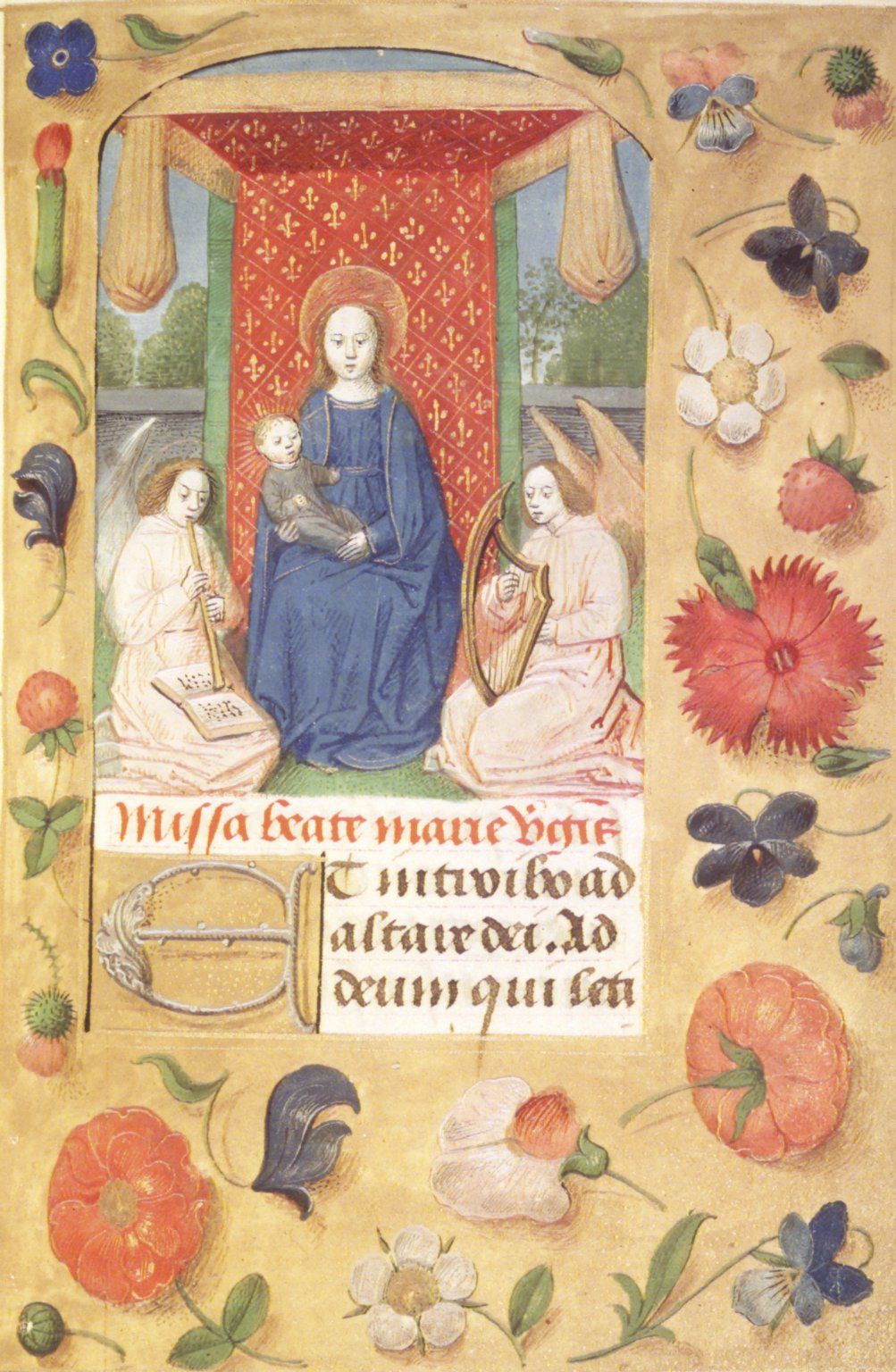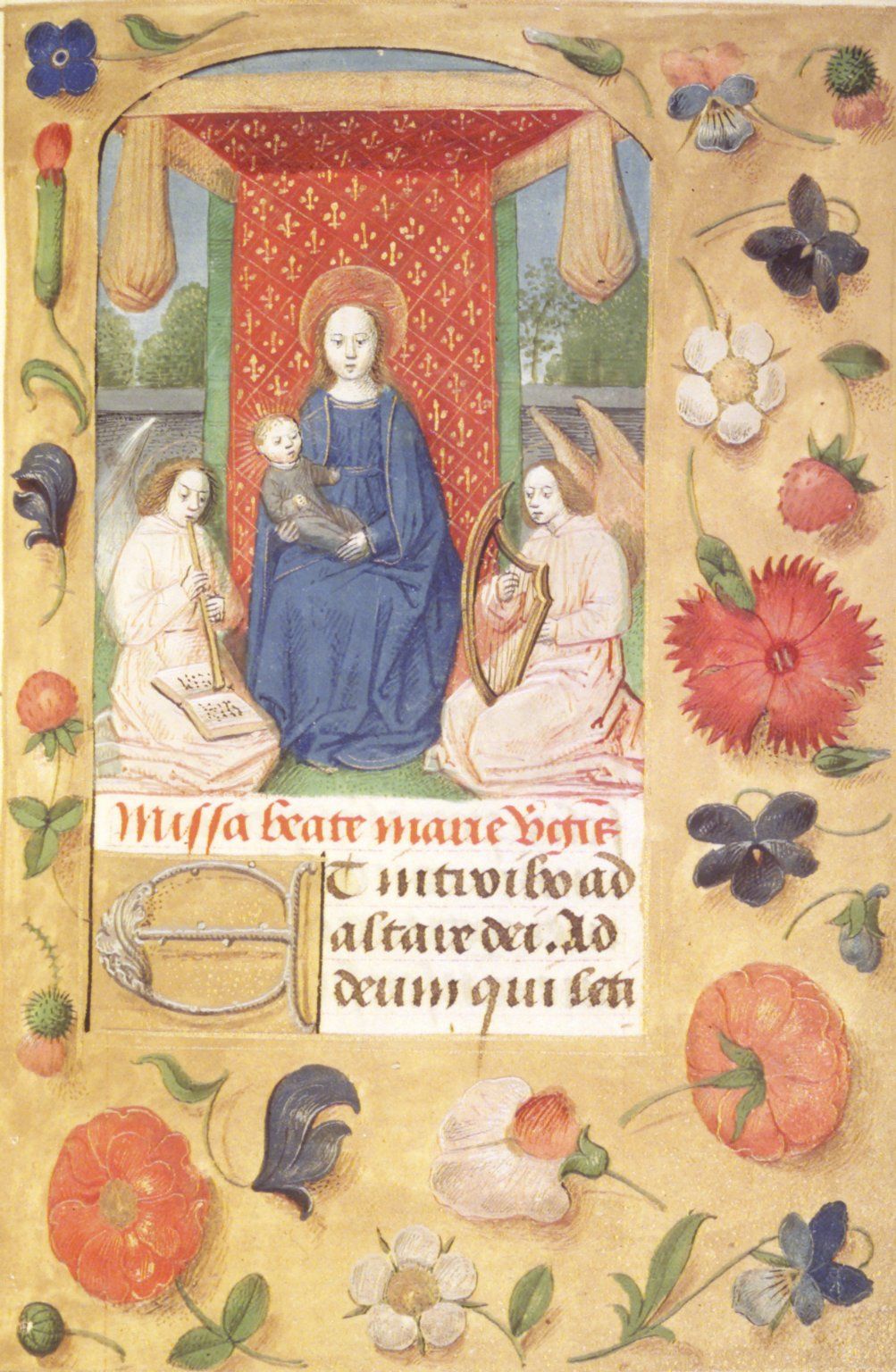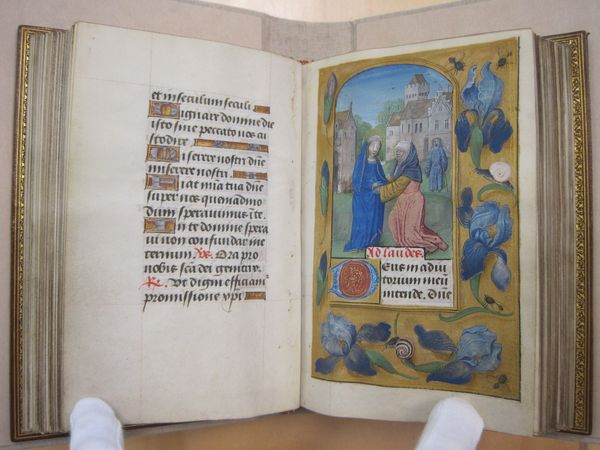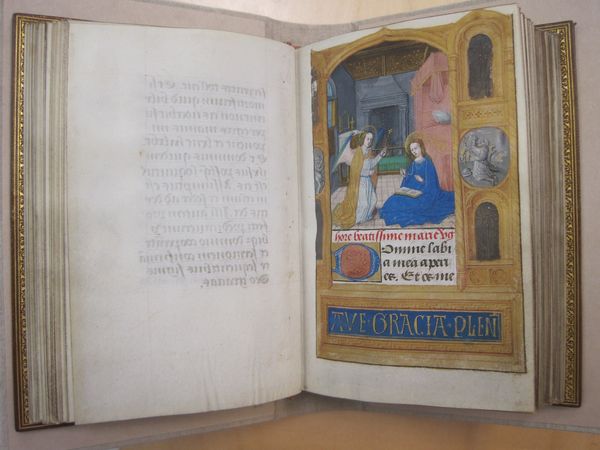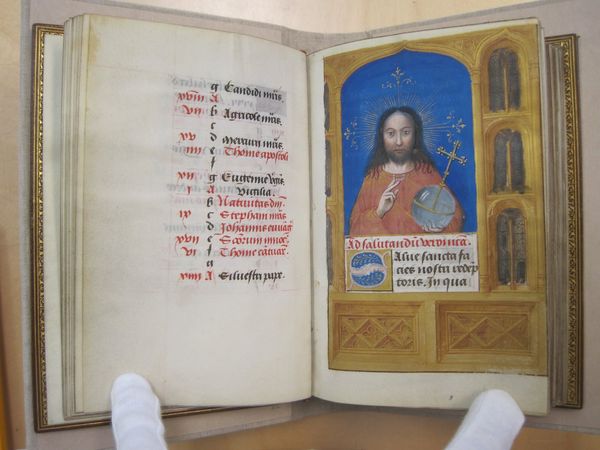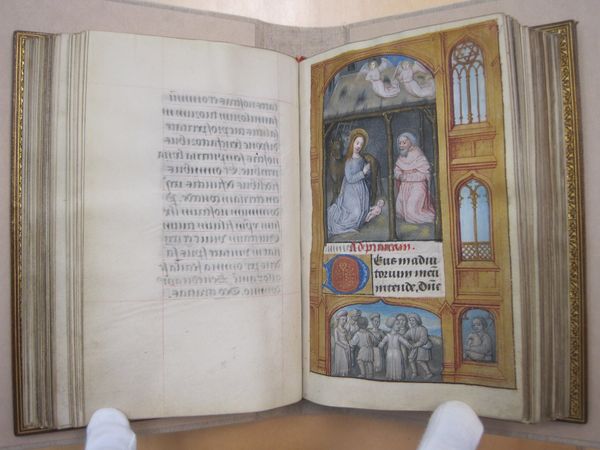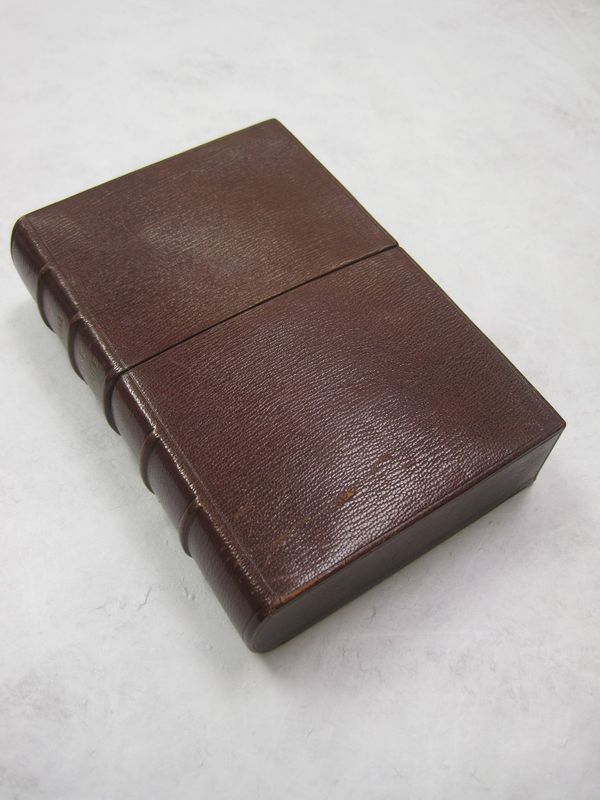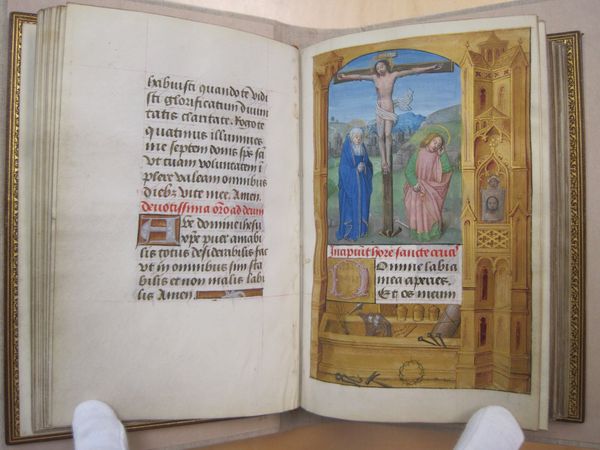About the Image:
This is a beautifully detailed page in a Book of Hours, specifically the "Horae Beatae Mariae Virginis." These books, predominantly used during the late Middle Ages into the Renaissance, were Christian devotional books primarily for laypeople. They typically contained prayers, Psalms, and Gospel lessons to be recited at specific canonical hours of the day.
Here's a detailed analysis of the page:
- Central Image:
- Virgin Mary and Christ Child: The Virgin Mary is depicted holding the Christ Child. Their serene expressions and the emphasis on the interaction between mother and child were common themes during this period, underscoring the intimate, human aspect of the divine.
- Angels: Surrounding the Virgin and Child are angels, one playing a musical instrument and another appearing to be in a moment of reverence or prayer. Their presence emphasizes the heavenly nature of the scene and the divine significance of the Christ Child.
- Background & Setting:
- The intricate red canopy adorned with golden patterns establishes a royal or divine setting for the central figures. The glimpse of a landscape in the background adds depth and perspective, a feature becoming more common in the Renaissance as artists explored the techniques of spatial depth.
- Marginalia & Borders:
- Floral Designs: The borders are adorned with detailed and vivid depictions of flowers, fruits, and insects. This "millefleur" (thousand flowers) style was popular in Northern Europe during the 15th century and is characteristic of some Books of Hours.
- Textual Elements: The Latin script at the bottom seems to be a religious text, possibly a prayer or verse, given the devotional nature of the image above. The elaborate initial with the decorative scrollwork is consistent with the ornate initials found in illuminated manuscripts of the era.
- Color & Technique:
- The artist employed vibrant colors, particularly the rich blues, reds, and golds. The choice of colors not only added to the beauty of the image but also had symbolic meanings. Blue, for instance, was often associated with the Virgin Mary, symbolizing her virtues and divinity.
- The intricate details, from the drapery folds to the facial expressions, showcase the artist's meticulous craftsmanship and attention to detail.
🙏🏽
This image is in the public domain.
